
Presentations Archive

An Architect's Framework for Navigating Complexity
It is critical for Architects to use effective decision-making approaches that are adaptable and match the complexity of each situation. Deven Gengan assists architects to execute in more adaptable ways and serve their organisations effectively.

A toolbox of modern management practices for a Digital World
The world is moving faster and traditional methods are not working anymore. Josef Langerman gives an overview of these management techniques and how they can enable organisations to move forward. Enterprise Architecture has a crucial role to play, and we will discuss this contribution.

Architecting Solutions for the Cloud
Amazon Web Services (AWS) is the fastest-growing and first IT company in history to reach $10 Billion in revenue. In this presentation, Michael Needham focuses on how Amazon innovates at a break-neck pace through its culture, organisation and technology while still operationally running workloads of 1 Million+ customer.
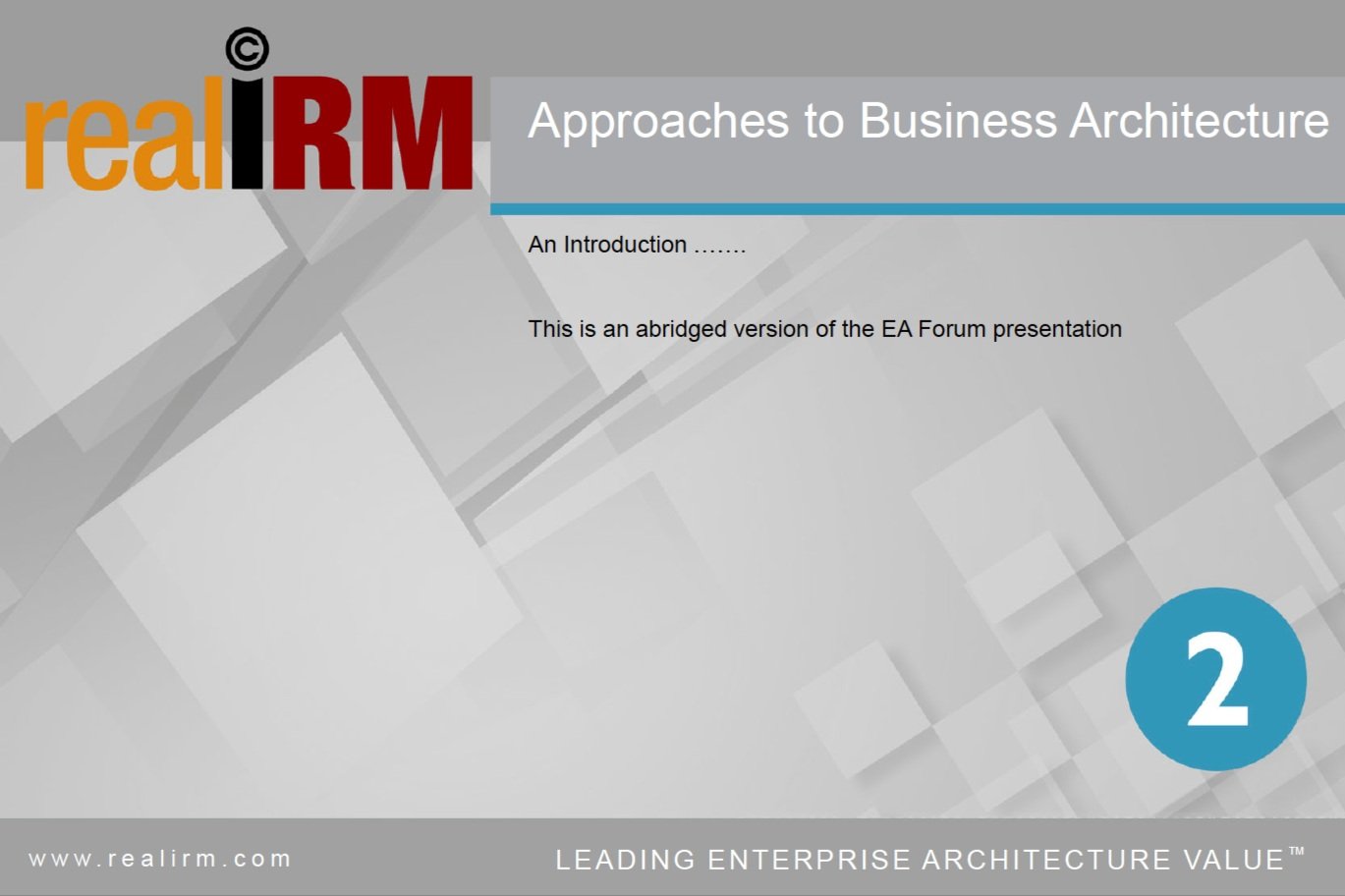
Approaches to Business Architecture
In this presentation Michael Payne debates the merits of placing Business Architecture within an organisation’s Business, IT or Enterprise Architecture departments. He examines some of the options available to organisations starting out with Business Architecture, and touches on Business Architecture engagement models.
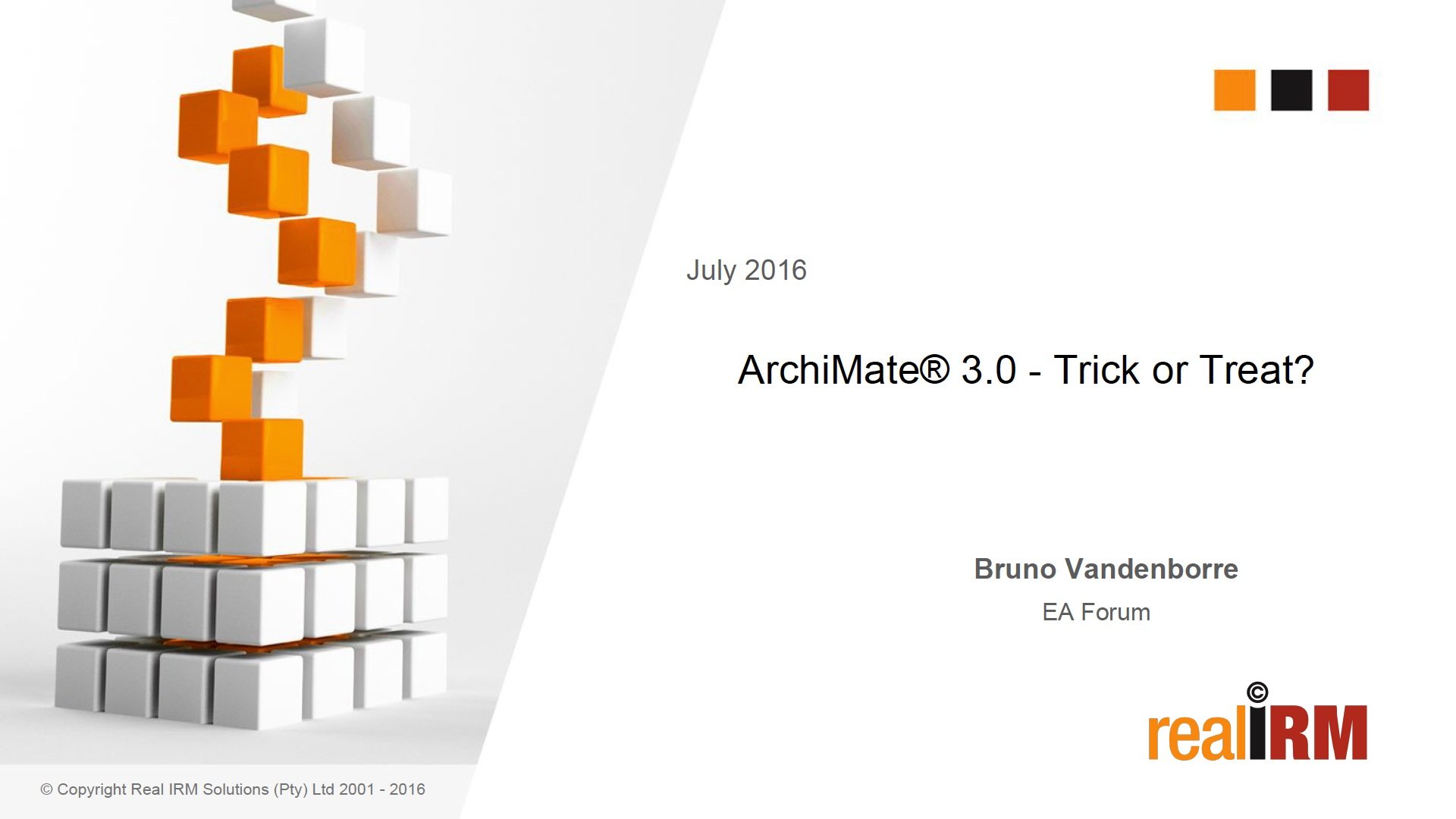
ArchiMate 3.0 - Trick or Treat?
In this presentation, Bruno Vandenborre, The Open Group accredited trainer at Real IRM, explores the purpose and utility of the new version of the ArchiMate standard. As well as a look at the updates and changes to the new version, he discusses the various responses and critiques to ArchiMate, and provides insight into how ArchiMate benefits the South African market.

Technological Trends in a Disruptive Age
In this presentation, Gerhard Botha, Head of Group MES architecture at Sasol, discusses the major technological trends that are set to challenge businesses. He will take a look at opportunities as well as ways to respond to the challenges.
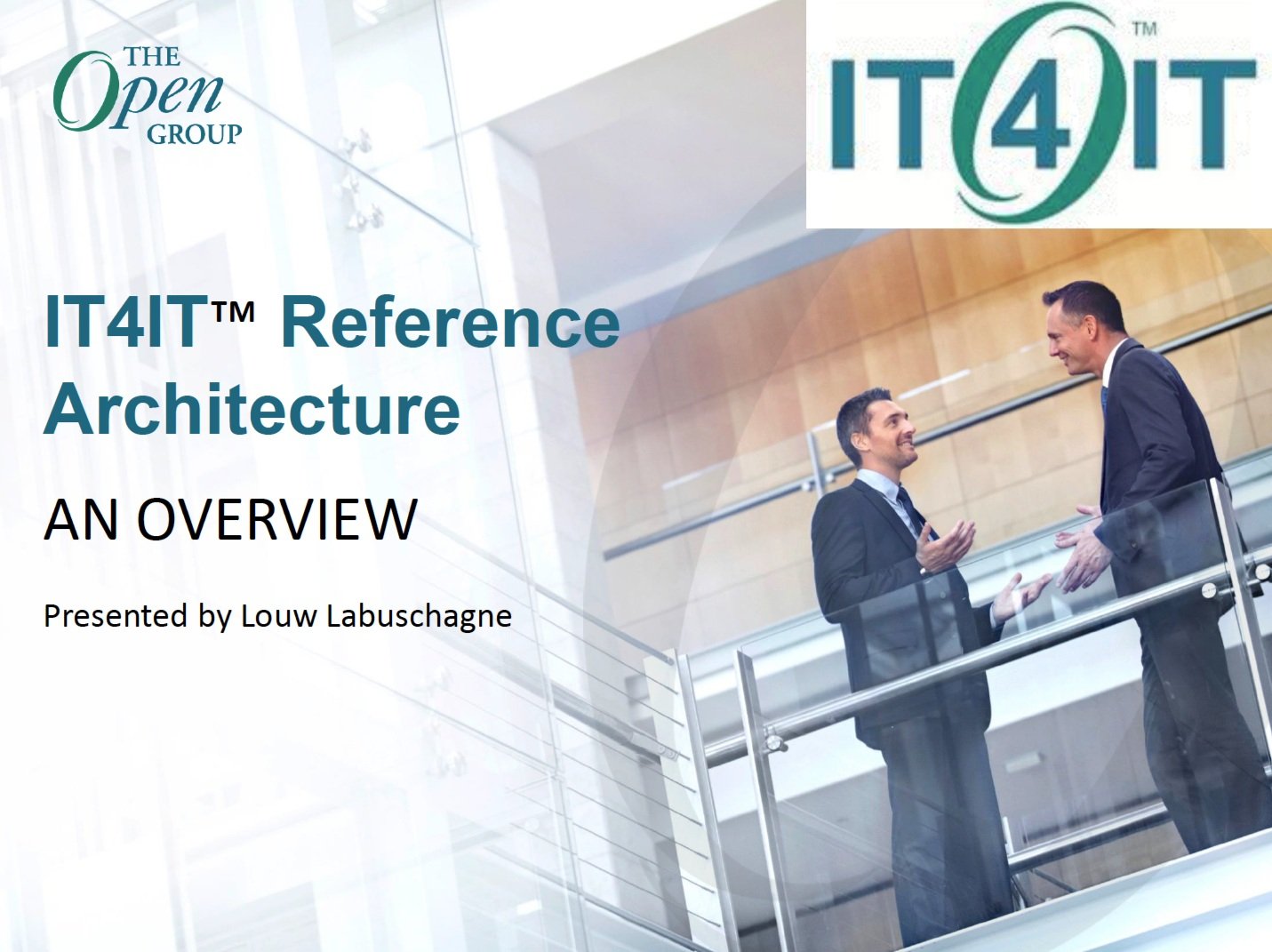
IT4IT - Managing the Business of IT
An overview of The Open Group IT4IT Reference Architecture. It is a vendor and product-agnostic value chain-based operating model for managing the business of IT. While providing guidance on the design, procurement and implementation of the functionality needed to run IT, it also enables the systematic tracking of the state of IT services across the service life-cycle.

Global Implications for Business Process and EA
In this presentation, Graham Fleischer, S&OP Coordinator and Demand Analyst at Arysta LifeScience, discusses the work done at the dynamic multinational. He describes their changing organisation and take us through the pitfalls and successes they have encountered through dealing with people, processes and systems.

Corporate Governance of ICT in the Public Sector
Corporate Governance of ICT in the public sector sets out to formalise the use of ICT as a resource to enable service delivery. This requires a cultural change since ICT needs to migrate from its technical role to become a strategic player in government service delivery efforts.
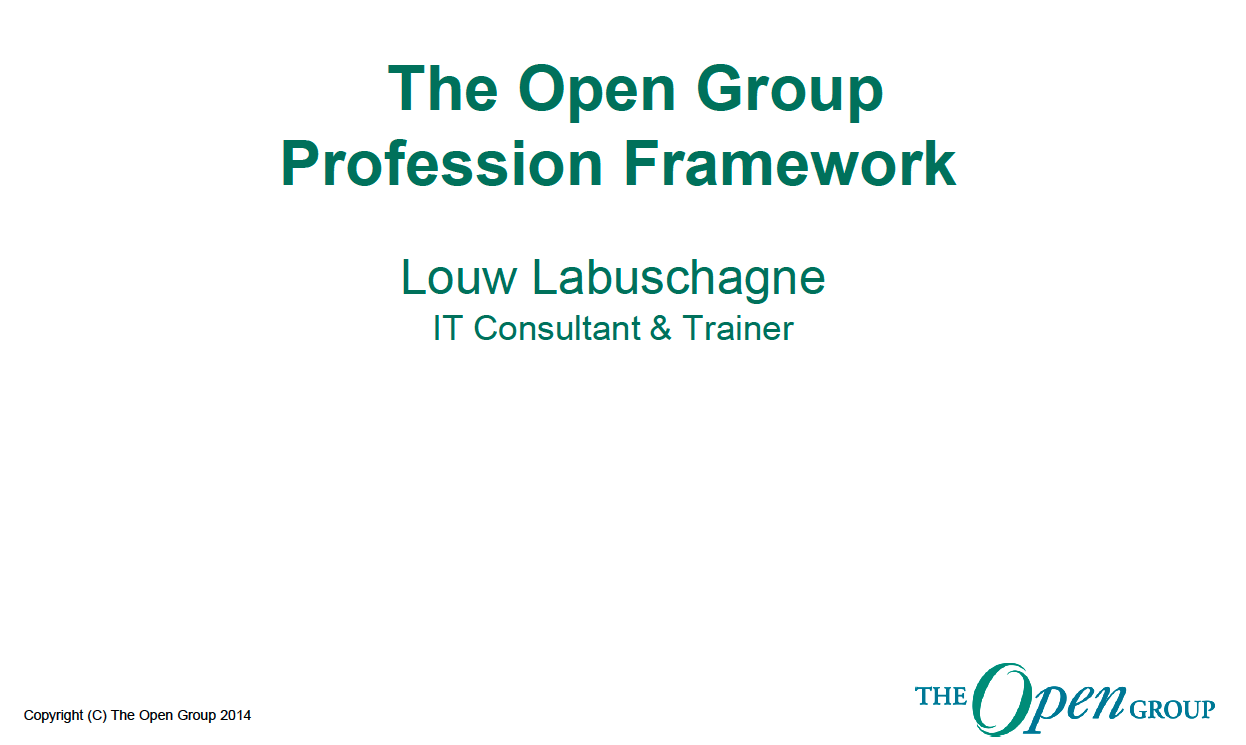
Open CA/CITS - Professionalisation of the Information Technology Sector
This presentation provides an overview of the Open Certified Architect (Open CA) and Open Certified IT Specialist (Open CITS) programmes from The Open Group. These globally recognised, vendor-neutral certification programmes require candidates to submit a portfolio of evidence that details their skills and experience. Suitable for a variety of IT professionals, the Open CA certification has IT Architecture, Enterprise Architecture and Business Architecture streams, and the Open CITS certification caters to IT specialists including Business Analysts, Developers, Testers, Security Specialists, Network Specialists and Service Support Specialists.
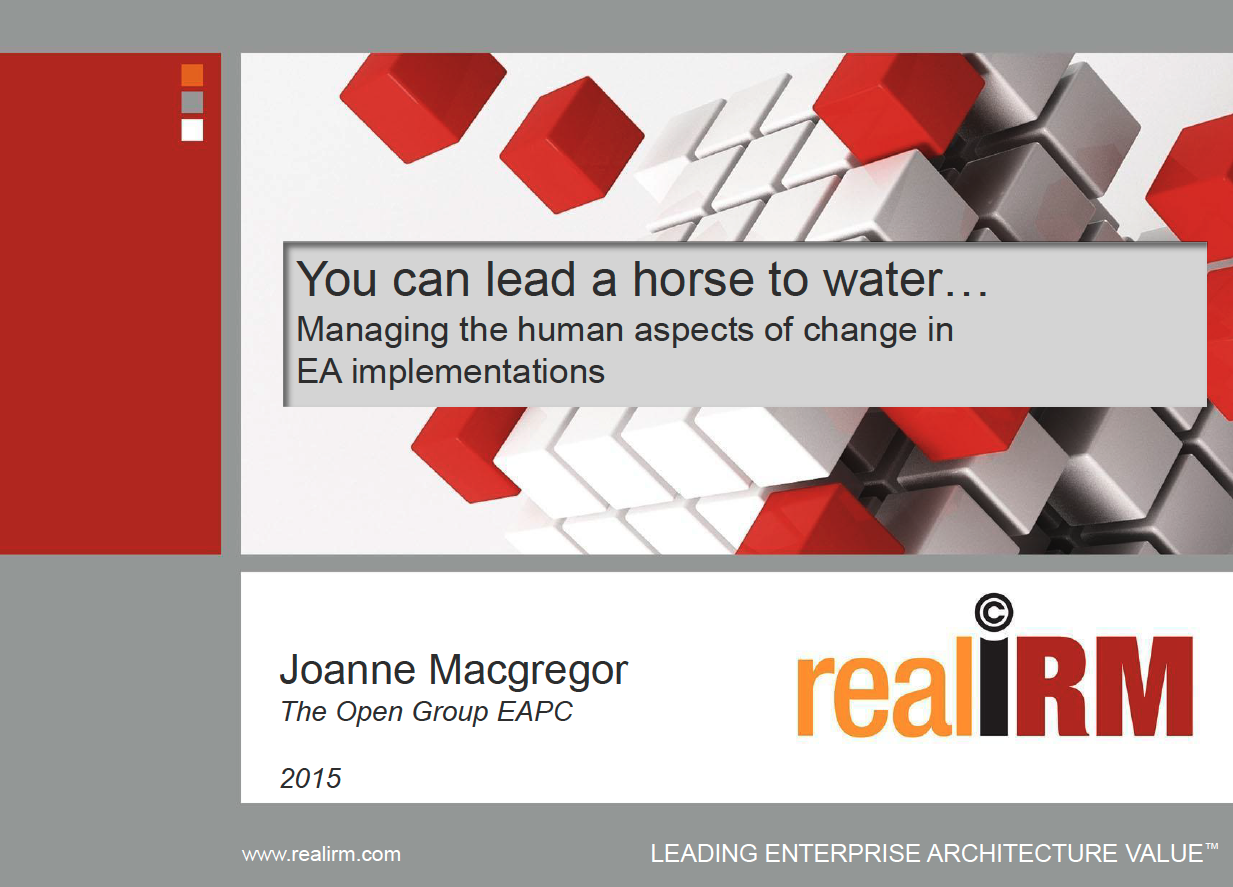
Managing the Human Aspects of Change in EA Implementations
This presentation explores the role and composition of enterprise architecture (EA) Change Management and examines how it differs from change leadership. It introduces John Kotter’s 8 steps for leading change and provides a brief overview of the process of managing human change in EA implementations and organisational transformations. It also includes a consideration of the psychology of change - what psychological factors, change strategies and organisation conditions increase the individual’s motivation to change, and which merely exacerbate normal resistance to change.
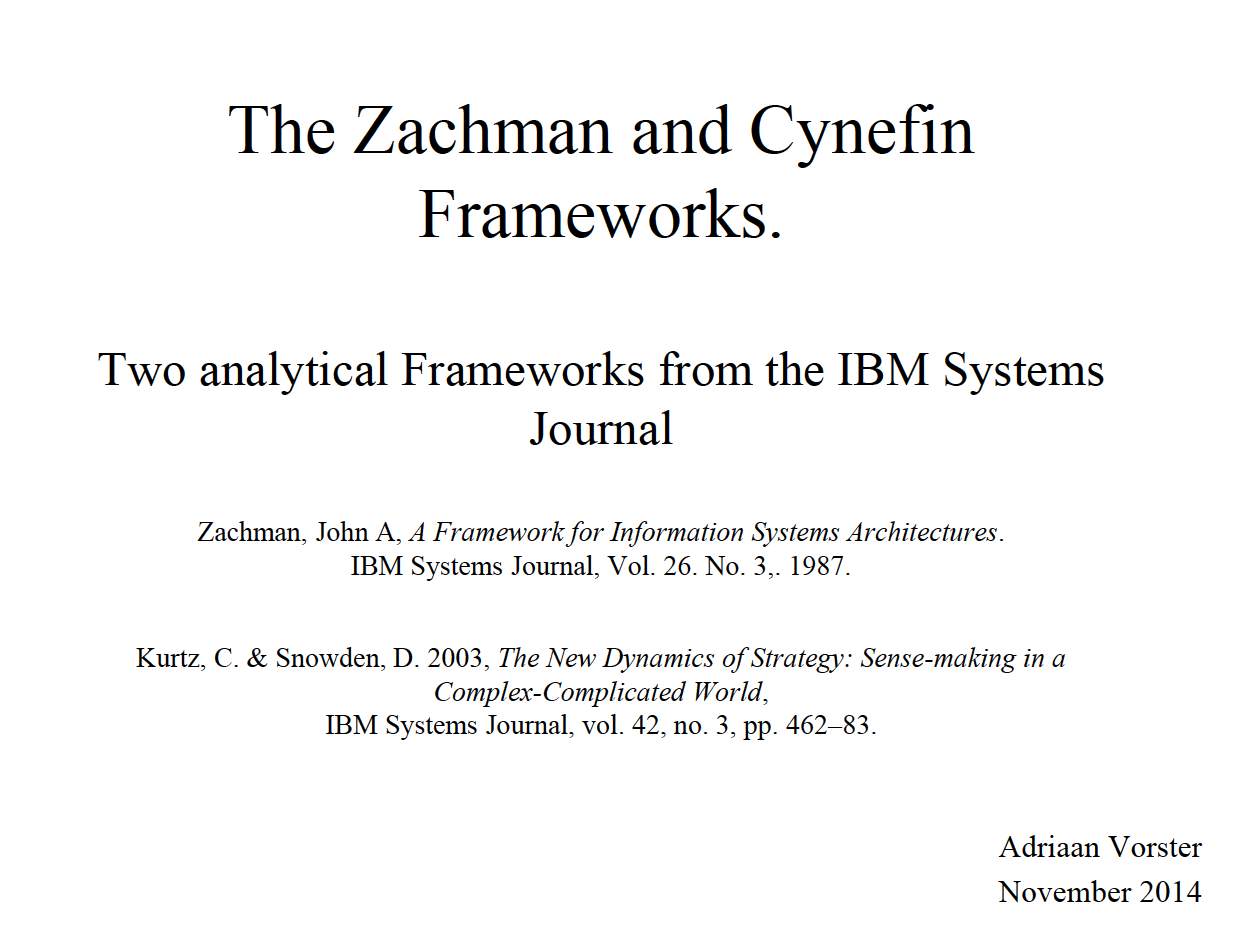
Frameworks of the IBM Systems Journal
The Zachman Framework can be seen as a classification scheme, whereas the newer Cynefin Framework is seen as a “sense-making” framework. Adriaan Vorster's presentation looks at the features, similarities and examples of the uses for the two frameworks.

EA - The Linchpin between Corporate Governance & IT Governance V2
The presentation (updated to version 2 with new slides and information) focuses on how a synergistic approach between Corporate Governance, IT Governance, and Enterprise Architecture can increase an organisation’s value while reducing cost.

GWEA Framework Yields Success at Ekurhuleni Metropolitan Municipality
Vuyani Zwane's presentation focuses how Ekurhuleni Metropolitan Municipality is using an architecture approach to business process standardisation to enable them to become a "Digital City". He includes a look at their use of the TOGAF, GWEA and eTOM frameworks to create a business process management-centric practice within the organisation.

Business-Driven EA at Eskom
Sean Maritz and Dawid Lok's presentation describes Eskom's Enterprise Architecture (EA) journey and their focus on standardisation, optimisation and simplification. It includes a look at on Eskom’s well-defined EA capabilities that are built around TOGAF.
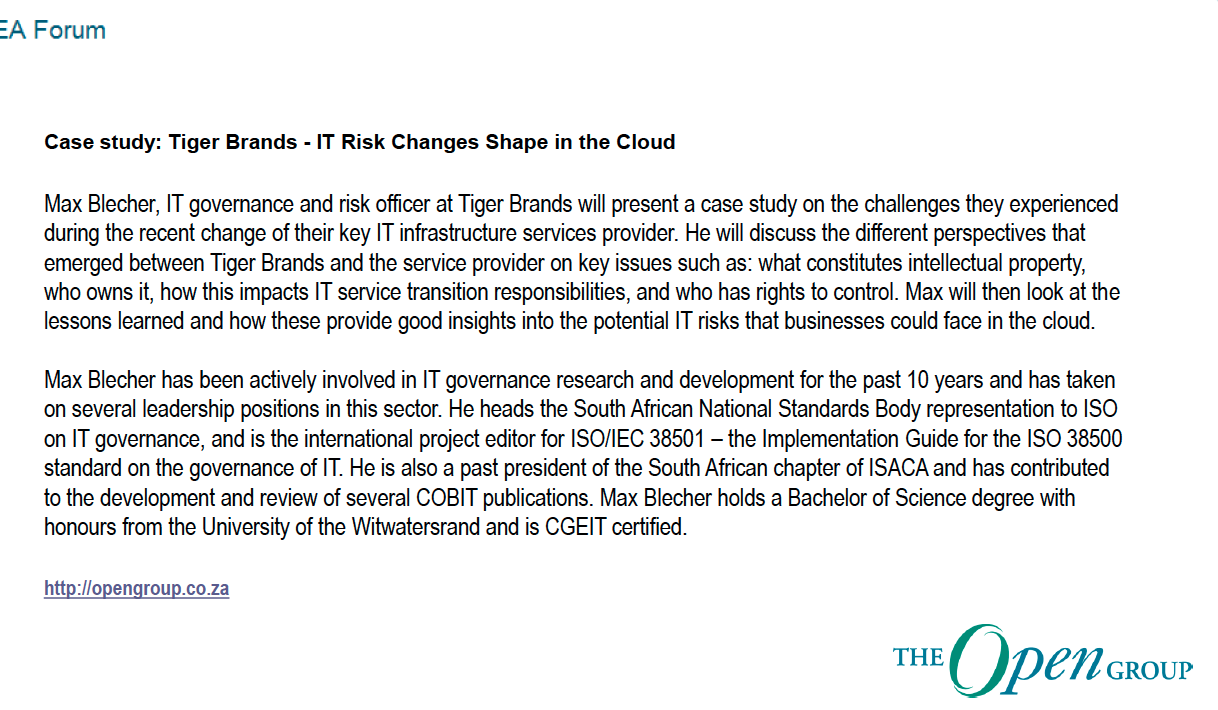
Case study: Tiger Brands - IT Risk Changes Shape in the Cloud
Max Blecher's presentation is a case study on the challenges they experienced during the recent change of their key IT infrastructure services provider. It includes the different perspectives that emerged between Tiger Brands and the service provider on key issues such as: what constitutes intellectual property, who owns it, how this impacts IT service transition responsibilities, and who has rights to control. The presentation also highlights the lessons learned and how these provide good insights into the potential IT risks that businesses could face in the cloud
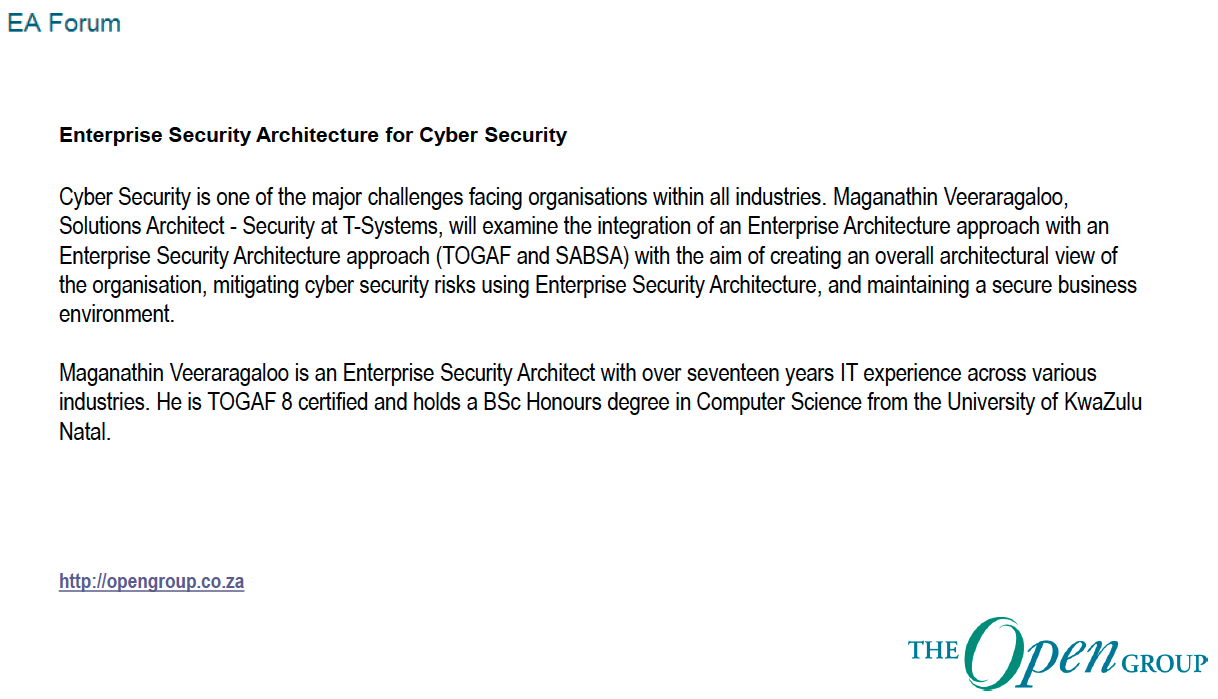
Enterprise Security Architecture for Cyber Security
Cyber Security is one of the major challenges facing organisations within all industries. In his presentation, Maganathin Veeraragaloo examines the integration of an Enterprise Architecture approach with an Enterprise Security Architecture approach (TOGAF and SABSA) with the aim of creating an overall architectural view of the organisation, mitigating cyber security risks using Enterprise Security Architecture, and maintaining a secure business environment

Managing Information as an Asset
Jurgens Pieterse's presentation focuses on the information management framework they use at the Parliament of SA to improve information management maturity in a measurable manner. He touches on information requirements management, information quality management, the role of an information architecture, integration layer and analytics in information management.

Enterprise Architecture - The Linchpin between Corporate Governance & IT Governance
Stuart Macgregor's presentation focuses on how a synergistic approach between Corporate Governance, IT Governance, and Enterprise Architecture can increase an organisation’s value while reducing cost. He includes a look at how King III and COBIT 5 make enterprise architecture the CEO’s accountability.

EA and Outsourcing at Standard Bank
In Sarel van der Westhuizen's presentation, he identifies the drivers and constraints for business process outsourcing of corporate and investment banking operations. He also looks at how enterprise architecture is used to guide outsourcing decisions at Standard Bank.
